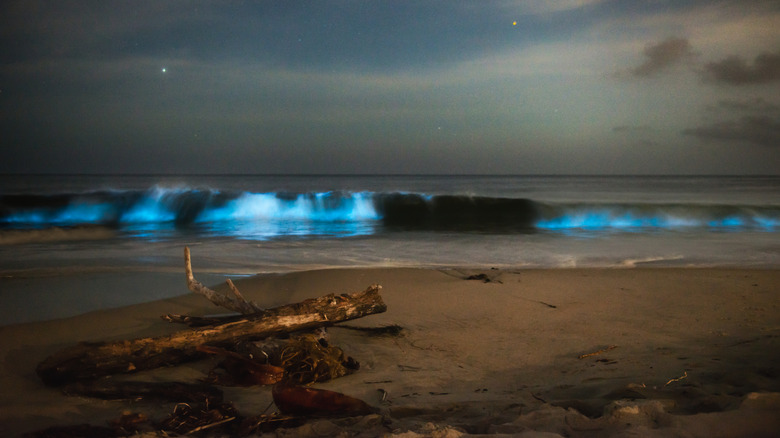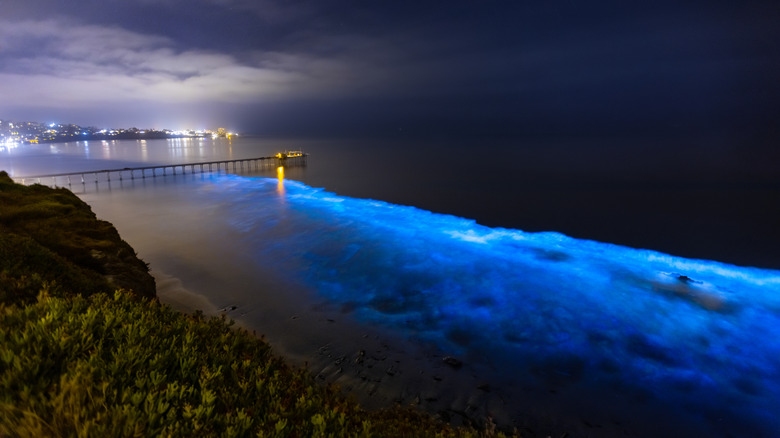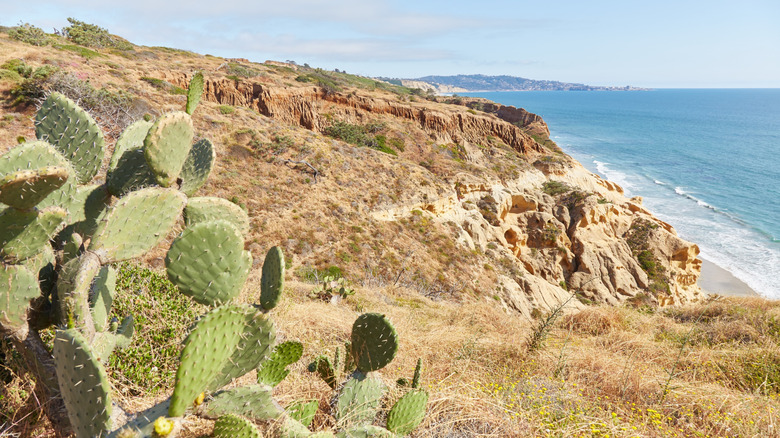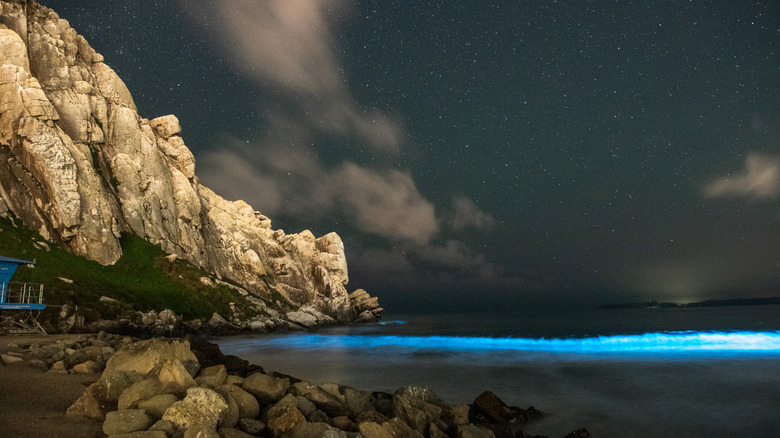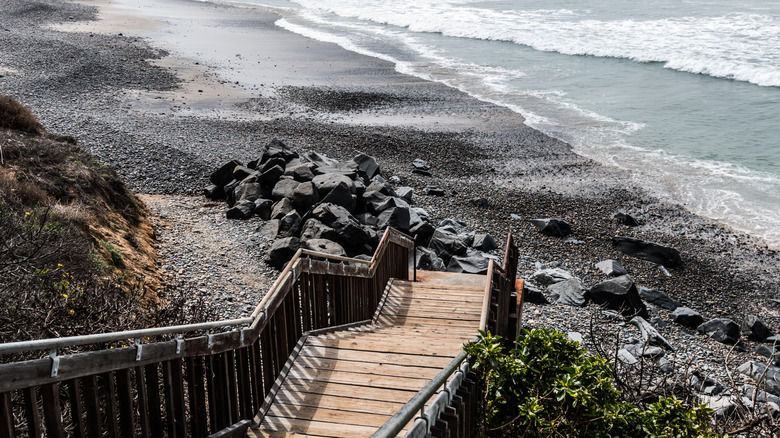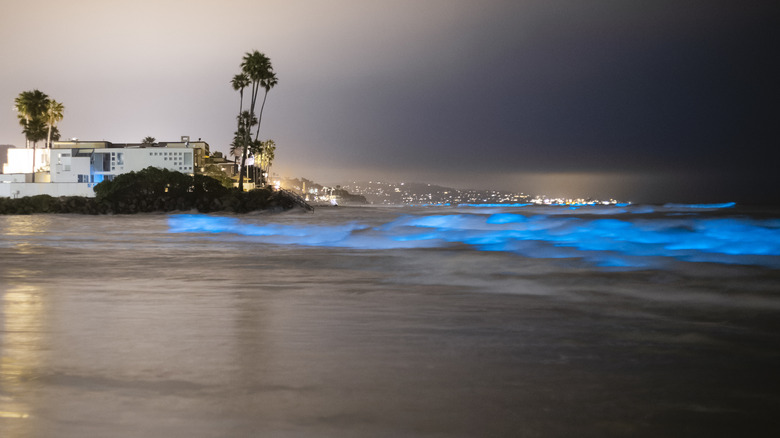Spring And Fall Are The Best Times To Catch Magical Bioluminescent Waves At These SoCal Beaches
Some of the most breathtaking landscapes in the world are found in Southern California, but few experiences compare to the ethereal, glowing waves that appear along its shores during the spring and fall. Witnessing this natural phenomenon should be on everyone's SoCal beach bucket list, as it's one of the most spectacular shows nature has to offer.
Though bioluminescent coasts can be found all over the world, perhaps most notably in Atila, Honduras, South California's beaches offer some of the best opportunities to catch the mesmerizing displays caused by these organisms that produce their own light through chemical reactions. If you're in SoCal during the right conditions, you may be able to catch one of these dazzling displays at any of the following beaches. While it's unpredictable and fleeting, those lucky enough to witness it say it's like viewing something from another world.
Though spring and fall are the best seasons to witness this incredible phenomenon, bioluminescence is somewhat unpredictable. The duration of these events can vary from days to weeks, and there is no real way of telling how long it may last. To ensure the best experience, there are certain things you can take note of in advance. Bioluminescence is often linked to red tides, so it's important to check the Red Tide Reports for news on the algae blooms, which can give you information on when the lights might occur. Bioluminescence is seen best at low tide, and watching on a moonless night is the ideal way to get the most impressive experience. Making the time to head towards some of these lesser-known coasts to witness this phenomenon is also a great way to escape the crowds that flock to Southern California's more popular beaches.
The science behind luminescence
So what exactly causes this incredible spectacle? Scientists are fascinated by this topic, a phenomenon caused by marine organisms that produce light through chemical reactions that happen during the photosynthesis process. Microscopic plankton called dinoflagellates, which populate coastal waters, glow when disturbed by the rhythm of the waves. When large blooms of these microorganisms accumulate on the shorelines, their glow becomes visible as a striking blue display that looks like it comes directly from a science fiction film.
This is caused by a light-emitting compound called luciferin reacting with oxygen. For the dinoflagellates, it's meant to deter predators. Though this bioluminescence can be seen throughout the year, it is most noticeable during spring and fall. During the day, the water where the dinoflagellates cluster may appear brownish-red in what's called a red tide, but at night, these microscopic organisms turn the sea into a neon landscape. In the months preceding these seasons, you'll see red tides at the same locations with algae blooms preceding the glowing tides.
You may be wondering if it's safe to swim in bioluminescence. While swimming through some bioluminescent waters is safe, some algae species, such as Alexandrium or Karenia brevis, may cause skin rash. Generally speaking, environmental agencies or the Coast Guard will release toxicity warnings if there is this risk, though it's typically recommended to view the glow from land or a boat.
Torrey Pines State Beach
Perhaps the best place to witness this incredible phenomenon is at one of San Diego's top beaches, Torrey Pines State Beach. Located between La Jolla and Del Mar, this beach has rugged cliffs and scenic trails, making it one of the more dramatic beaches on the coastline, regardless of the bioluminescence. A breathtaking location for both hiking and sunbathing, Torrey Pines transforms into something extraordinary at night.
Becoming more well-known as a bioluminescent hotspot in recent years, mainly due to the lack of artificial lighting on its shores, you can catch peak glowing blue waves at its bioluminescent events. You may even notice that your footprints in the wet sand leave trails of blue behind them. To reach Torrey Pines State Beach, you can drive north from San Diego. From Highway 5, exit onto Carmel Valley Road and drive west, and you'll reach Coast Highway after about 1.5 miles. There is a free parking lot located along Coast Highway 101 at the entrance on North Torrey Pines Road, and dogs are not allowed.
North Ponto Beach
You can also witness some amazing glowing waves at North Ponto Beach, an easily accessible and wide, sandy beach that is a favorite amongst nature photographers, especially during the bioluminescent season. The periodic red tides that lead up to the bioluminescent period are also visually stunning and worth seeing during the day. North Ponto Beach is a great spot for those wanting to avoid the crowds, as it tends to be less busy than other bioluminescent Californian beaches.
To reach North Ponto from San Diego, take Interstate 5 North and exit at Poinsettia Lane. Head west to Carlsbad Boulevard, then drive north until you reach North Ponto Beach, located just south of Carlsbad State Beach Campgrounds. For those arriving at North Ponto by car, there is a parking lot situated by Carlsbad Boulevard. The waters are recorded as being of very high quality, and North Ponto also attracts surfers. For those wanting to enjoy other activities on the beach, there is also a spectacular beach walk below the bluffs. During the daytime, North Ponto is good for surfing and tide pool exploring.
Carlsbad State Beach
For those craving some glowing magic further north on the coastline, another prime location to watch bioluminescent waves can be found at Carlsbad State Beach. One of the best places to catch a breathtaking sunset, and with long sandy shores, Carlsbad, one of California's most underrated beach towns, lights up at night, drawing visitors from all over with its otherworldly glow. This spot is incredibly convenient for travelers as it's conveniently located in close proximity to hotels and restaurants.
Located at the foot of San Diego's coastal bluffs, this beach is suitable for swimming and also has facilities for scuba diving, fishing, and surfing. To reach it, take Highway S21 at Pine Avenue off Carlsbad Boulevard. For those coming to observe the bioluminescence specifically, there is a campground located off of Carlsbad Boulevard. You can also grab a pizza or a beer whilst overlooking the ocean at The Camp Store, where, if you're lucky, you'll get to experience a live music event to go with the marine light show.
Newport and Laguna Beaches
Other good locations to see the natural blue glow are at Laguna Beach, where the coves capture the dinoflagellates, or Newport Beach, where frequent tidal reports make this a reliable option during bloom season. In Newport Beach, the long, flat stretches of sand make for an ideal viewing platform. You can watch each wave crest and crash with an otherworldly luminescence, like liquid lightning. Here, locals gather quietly near the Balboa Pier, letting their eyes adjust to nature's amazing show. A little further south in Laguna Beach, tucked into coves like Thousand Steps, the experience becomes even more intimate. The cliffs block out most of the city's light, making the glow feel brighter and more private.
With all this in mind, you're ready to experience one of the most incredible natural phenomena known to man in all its glory. There's something deeply moving about seeing the ocean come alive in such vivid color, reminding us how full of wonder our planet truly is. Where else than on Southern California's postcard-perfect beaches?
